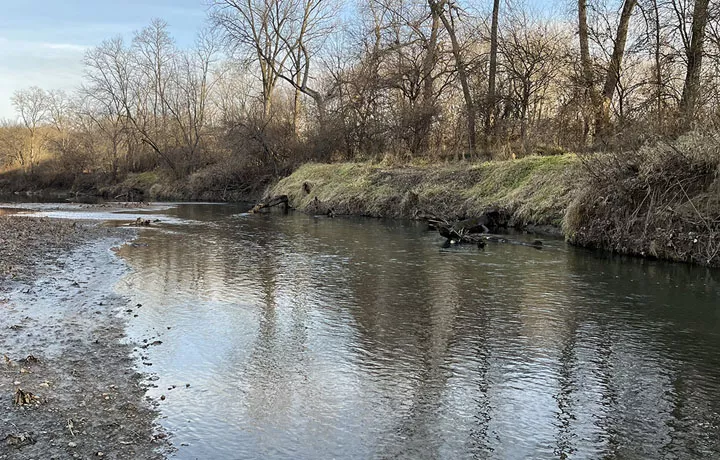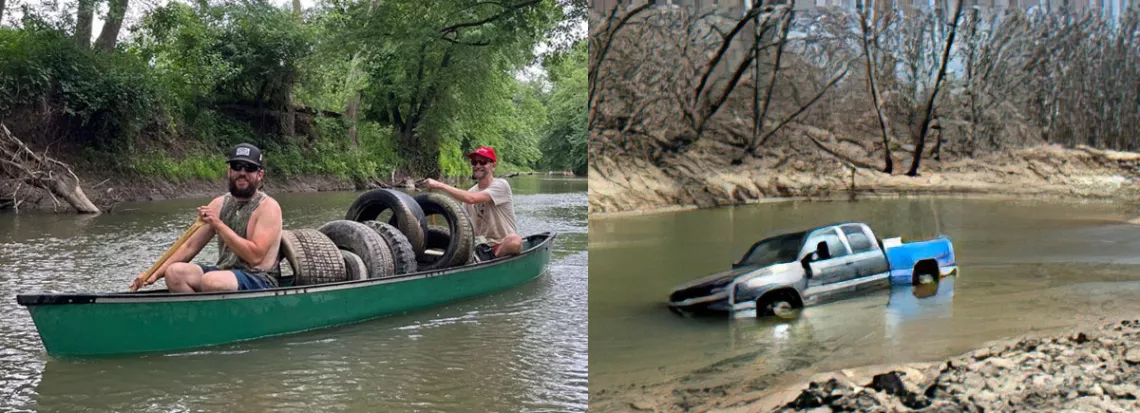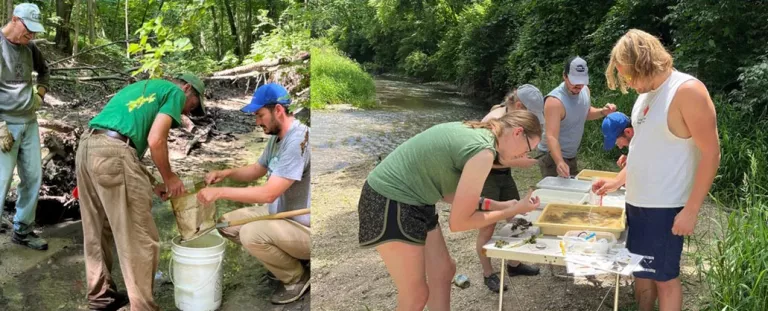| July 2024 |

By Robert Rowe
The hills and floodplains that make up Kickapoo Creek Watershed were set in place by the last glacier to depart this area ten thousand years ago, its moraine and meltwater making a wider valley than could have been created by the present-day stream, and depositing layers of sand and silt. The watershed drains over 309 square miles of Peoria county and bits of surrounding counties, before emptying into the Illinois River at Bartonville. The future of this much-overlooked and neglected watershed is the focus of a major study in progress by the Tri-County Regional Planning Commission (TRPC) and environmental consulting firm of Baxter-Woodman.
According to TRPC senior planner Reema Abi-Akar, the study will conclude in July 2025 when they will present findings and recommendations. Progress from the initial phase of the study was presented to a meeting of the Kickapoo Creek Steering Committee in Peoria on June 10th. In the meeting were representatives from the Sierra Club, Friends of Rocky Glen, Friends of Kickapoo Creek, The Sun Foundation, Peoria County Soil and Water Conservation District, the Greater Peoria Sanitary District, and the Illinois State Water Survey.
In the initial phase the survey created a catalog (including photographs and drone footage) of all the streams, lakes and detention basins in the Kickapoo Creek watershed. They evaluated each stream based on a set of criteria including degree of channelization, condition of riparian habitat, and amount of streambank erosion. In their survey they reported that 21% of the watershed was suffering from severe erosion, and 64% of the riparian (riverside) habitat was in poor condition, 33 % average and only 3% in good condition.
A study done in 2012 found that Kickapoo Creek was in “impaired” condition, heavily burdened with silt and contaminated with nitrogen, phosphorus, and fecal coliform bacteria, largely due to runoff from agricultural land. It was also determined that Kickapoo Creek is a major contributor to silt in the Illinois River. According to the Peoria Park District, much of the soil in the Kickapoo Valley flood plane is highly erodible. Originally, the upper reaches of the creek had wetlands that absorbed flood water but subsequent confinement by levees and plowing practices have increased both the volume and velocity of periodic flood events.
This would come as no surprise to anyone who is familiar with the lower portions of Kickapoo Creek, and especially the Friends of Kickapoo Creek, who, on June 8th, conducted a river clean-up, paddling a flotilla of canoes and Kayaks from Wildlife Prairie Park to Pottstown. They observed collapsing and slumping stream banks while collecting and hauling out 34 discarded tires along with other debris from this eight-mile stretch of creek.

Local citizens groups are coming together around this initiative to make better use of this natural resource that is literally in our backyard. A group of local volunteers have begun to document the biological health of the waterway by sampling and recording biological populations in critical portions of the Kickapoo Creek watershed. The number and diversity of specific pollution-sensitive species is an indication of the quality of the aquatic habitat.

Individuals wishing to join in the monitoring of our state waters are invited to visit the Illinois RiverWatch web site. Training sessions are available through the Great Rivers Research and Education Center for Winter Chloride Monitoring and for Biological Surveys. (See March/April 2024 Tallgrass Sierran article Macroinvertebrate Monitoring in Small Streams.)
While specific recommendations from the study will not be forthcoming until next year, In a presentation senior planner Reema Abi-Akar made before the Heart of Illinois Group Sierra Club at Forest Park Nature Center on May 15th of this year, the speaker and some of the attendees noted potential obstacles that may impede implementation of needed measures. These included land-owner objections and local ordinances on such matters as storm water, weed control and zoning that may run counter to the best ecological solutions.
The next update from the study team will be on August 10th, when there will be an “Open House” at Wildlife Prairie Park during the Kickapoo Creek Festival. We will be following the progress and outcome from this study and hope it will lead to positive steps for the sake of aesthetics and public health and safety.